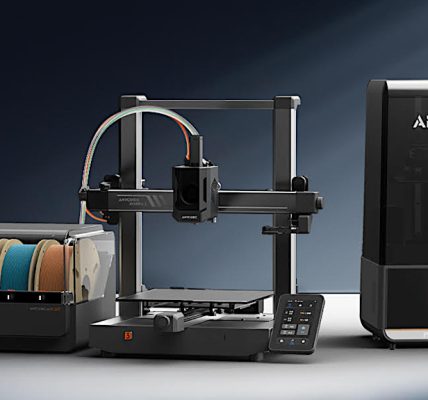It’s the end of Apple’s boring leadership, which has gotten us used to introducing a new smartphone every fall with a slight design tweak and performance improvements. Last year, the experimental iPhone X began to break the mold; all the rumors and leaks suggest that 2018 will see the launch of three new models, something Apple has never done before, which will be the first major revolution in its phone lineup since the introduction of manufacturing large phones in 2014.

New iPhone
Last June, Apple’s most respected analyst Ming-Chi Kuo confirmed rumors of three new models that would start with a 5.8-inch screen (like the current iPhone X), accompanied by two other even larger sizes: 6.1 and 6.5 inches, respectively. Recent leaks of presumed components for these displays seem to confirm this prediction.
According to Kuo and other analysts who have been trying to predict Apple’s subsequent moves for months, they have observed suppliers who have begun secretly manufacturing the new models at this point, with the 5.8-inch and 6.5-inch coming with OLED displays (like the iPhone X), while the 6.1-inch will have an LCD screen (like the iPhone 8, but with significant improvements).
Goodbye Start button
Using more modern LCD technology will allow Apple to make the screen take up almost the entire front of the phone, so the new trio of 2018 models could feature the same “bezel-less” design as the iPhone X, including the much-debated chin. The notch on the screen is occupied by a complex system of cameras and sensors that allow the phone to be unlocked by facial recognition, in addition to selfies. According to the just released Forbes, has detected a significant increase in the manufacture of these sensors, which would confirm that Apple will promote its great innovation of 2017.
All this means saying goodbye to its iconic Start button (from the first iPhone in 2007 to the iPhone 8) and definitely replacing the fingerprint recognition (integrated in that button since 2013) with facial recognition. This is one of the areas of technology where Apple has an advantage over Android phone makers, who haven’t yet implemented a reliable enough system to eliminate fingerprints.
Triple camera?
Instead, this spring, Huawei took the lead over Apple with its P20 model’s triple rear camera, which allows for more optical zoom and objective opening. That means, among other things, it can take better pictures of distant objects and poorly lit scenes.
That’s sure to hurt Apple, which has always boasted that their phones take the best photos (even though they haven’t had the best cameras for years). One of the big unknowns about the new 2018 iPhones is whether any of them will come with a triple camera. That could be the great claim of the larger 6.5-inch model, which was known as the iPhone X Plus before it was created. However, most analysts agree that there won’t be a triple camera until 2019; so if that’s true, Apple will be forced to try to continue innovating with dual cameras, which is certainly the case with the new 2018 iPhone X (5.8-inch) and the so-called 6.1-inch model. Many analysts are already referring to the iPhone 9 as the last model.
USB-C and more battery
There are rumors that Apple has dared to replace the only connector in the iPhone, called Lightning, with a USB-C port (like its laptops), but this still has the advantage of making the change unlikely. Yes, they sound more reliable, which suggests that all new models of 2018 will come with an 18-watt USB-C charger in their boxes, which will allow the phone to charge twice as fast as the current 5-watt USB charger. With this improvement, Apple will try to please its users, who should not expect a big boost in battery life, but will make some improvements, since in those larger phones can be installed a larger battery and will bring energy savings with the operating system iOS 12 and new processors.
Dual SIM and 4G faster
In the chapter of boring news, as every year will show a new generation of processors designed by Apple itself as the engine of its phones (in 2018 will be the A12), which will also include new chips to connect to the Internet phone. While waiting for the arrival of 5G technology in 2020, will allow faster Internet connection speeds in those places where there is a previous generation 4G network.
In addition, one of the last hurdles for Steve Jobs’ Apple could fall. Until now, only two SIM cards could be used at the same time on Android phones, a situation that could change if one of the new models includes an internal virtual SIM card, which can operate the phone with a carrier other than the physical card without having to withdraw it, according to some rumors.
A more aggressive price
Analyst Ming-Chi Kuo is clear: Apple will introduce a more aggressive pricing strategy, l



